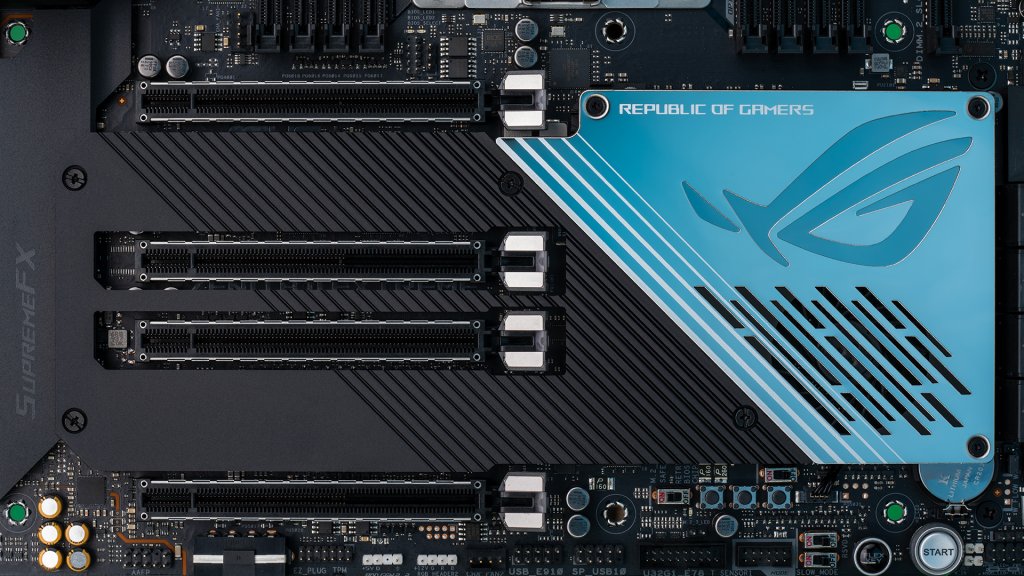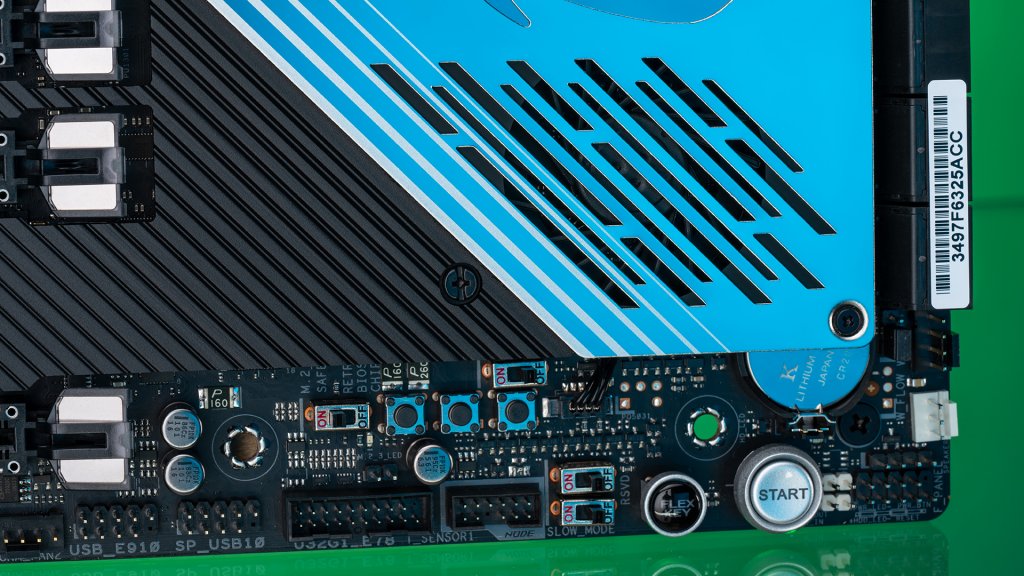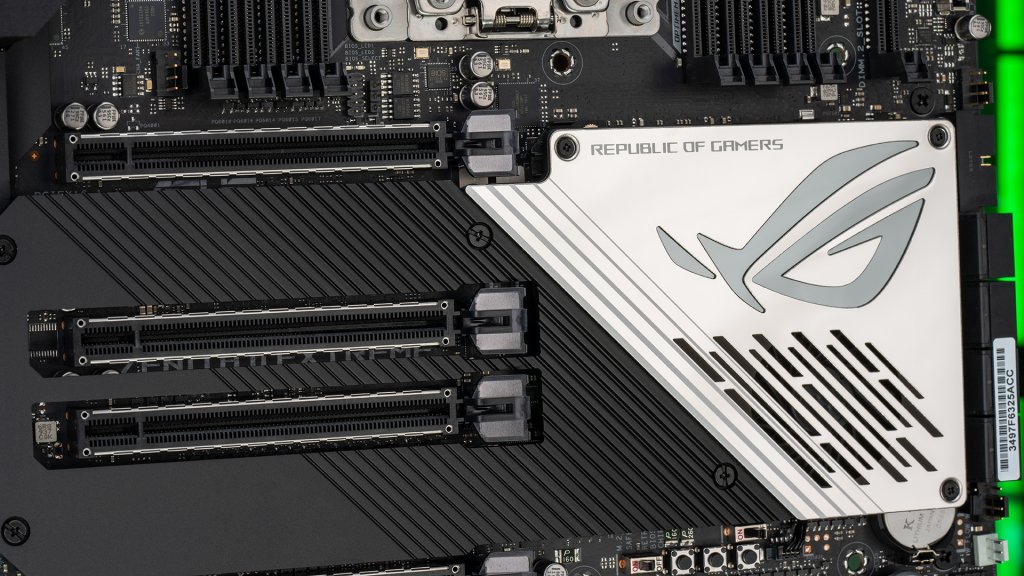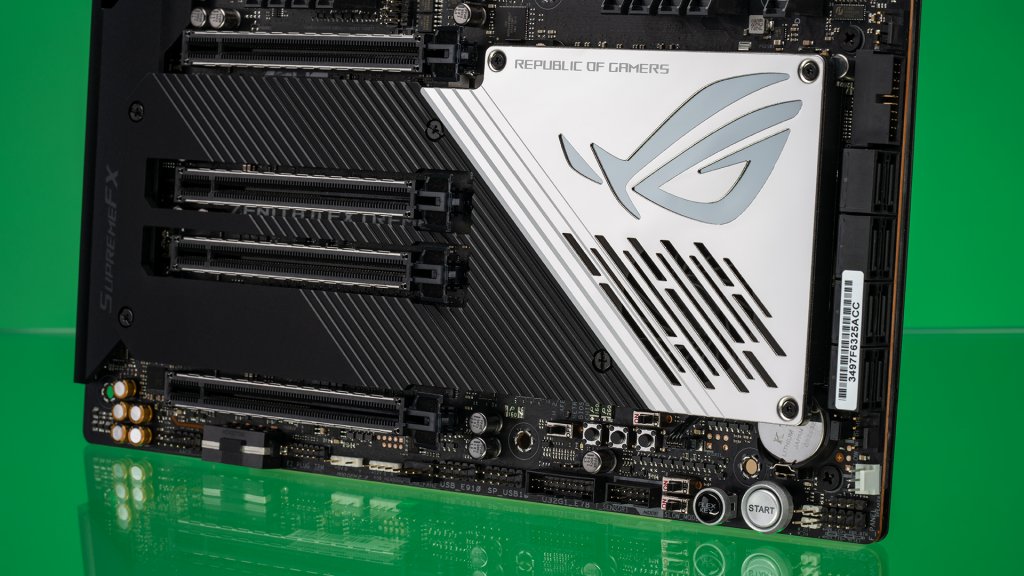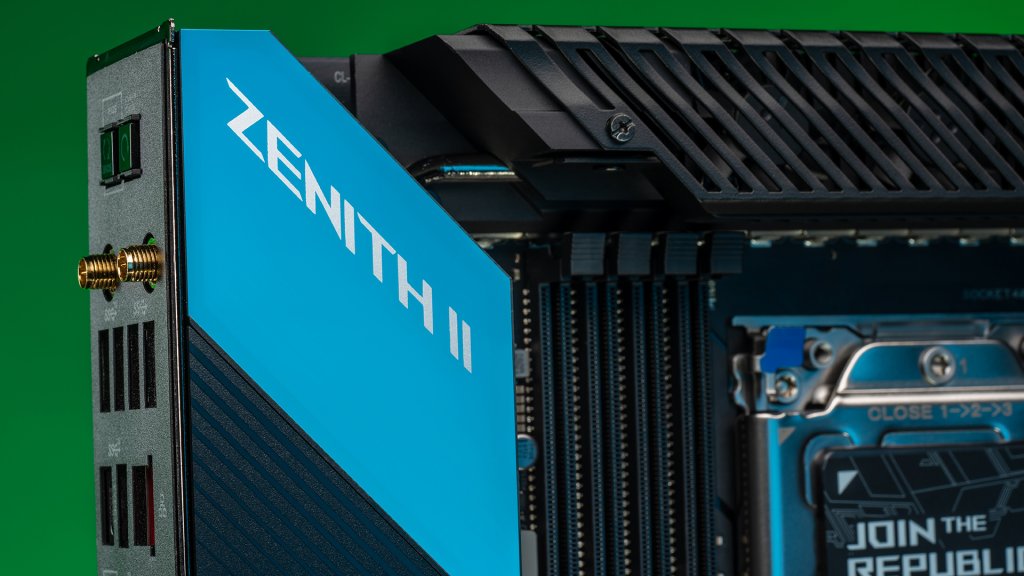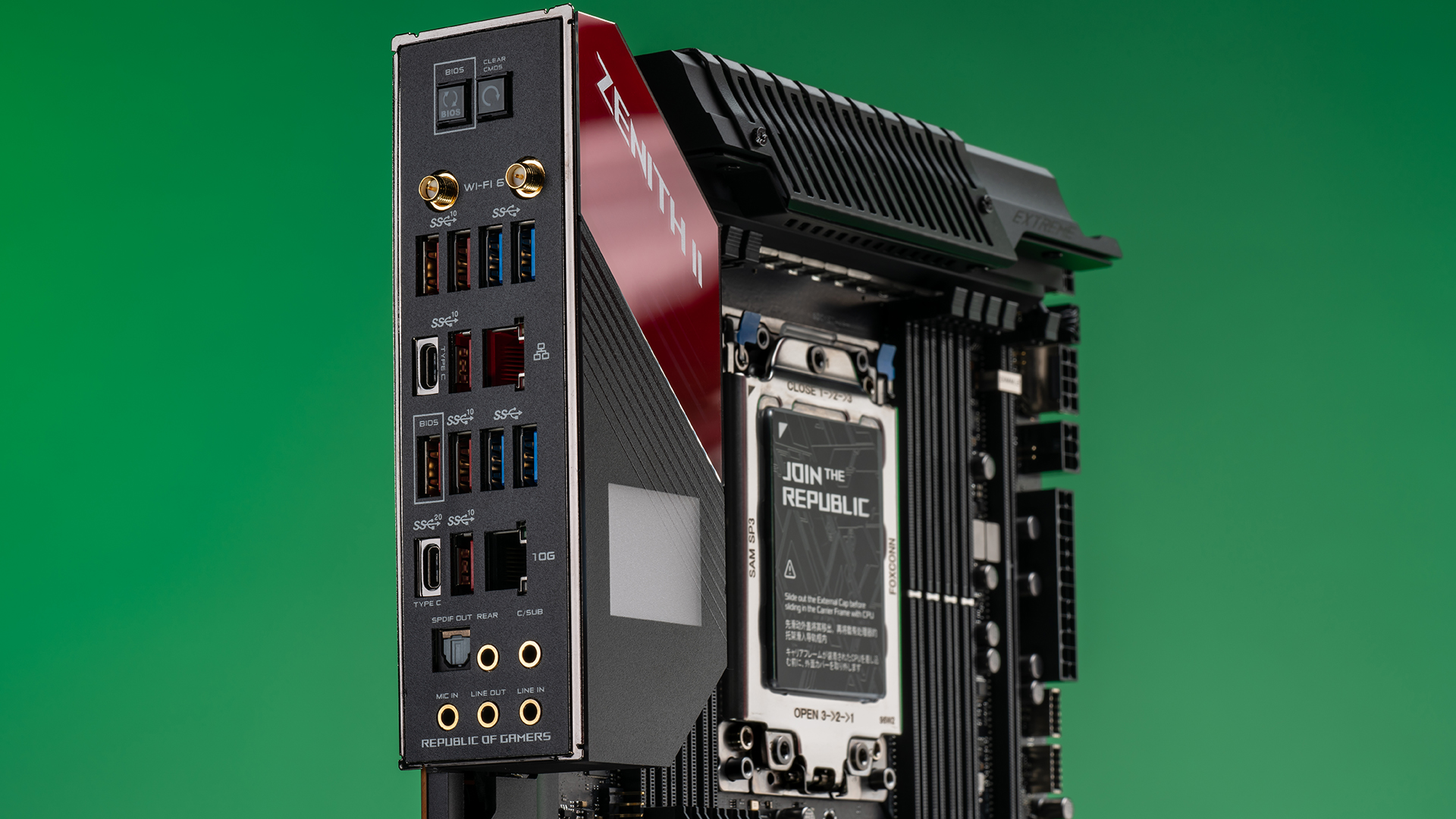
AMD went on a tear in 2019, releasing new lines of technology quarter after quarter. The latest, released in November, is the newest generation of Ryzen Threadripper processors, and ASUS ROG came to the launch prepared with its own new flagship motherboard—the Zenith II Extreme.
Threadrippers are notorious in the PC processing industry for out-muscling and outperforming most other processors on the market, whether they be Intel, other AMD chips, or even those for servers. The new third generation of Threadripper CPUs, the 3960X and 3970X, maintains that reputation with new and improved tech and more cores than you can count on four hands. The catch with the new generation of Threadripper is that it brings with it a new socket type: sTRX4.
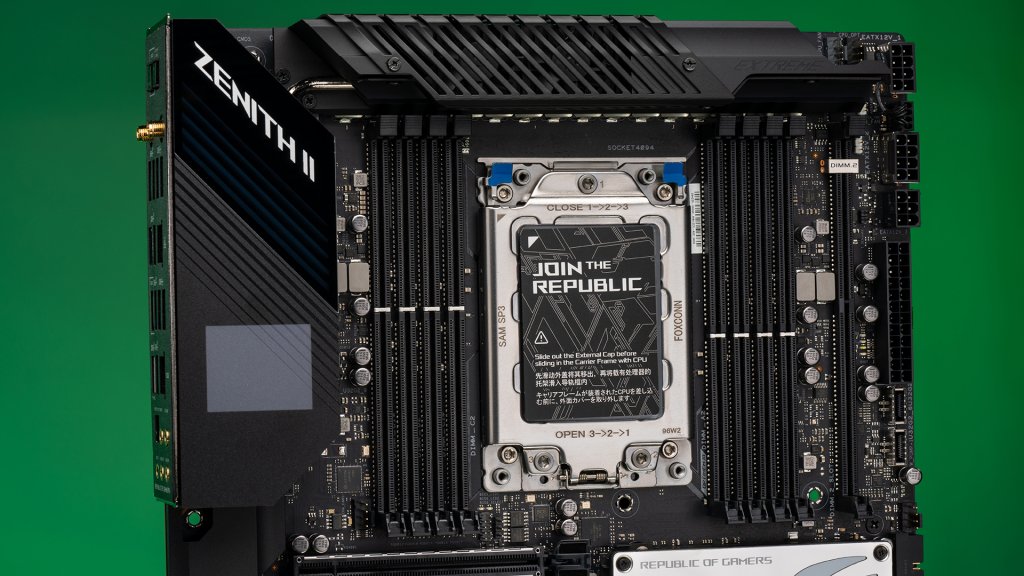
This means that if you want to upgrade from a 2nd-gen Threadripper to a 3rd-gen, you’ll need a new motherboard, too. Luckily for you, the most trusted PC component manufacturers, including ASUS, MSI, Gigabyte, and ASRock, have drafted all-new models of incredibly impressive motherboards to match, and you have some great choices to choose from.
ASUS used this new generation of processor to create something special. This board, the ROG Zenith II Extreme, is a work of art, and ASUS gave us one to try out for ourselves.
Without spoiling anything just yet, we were impressed.
Zenith II is more than a best-in-class gaming motherboard
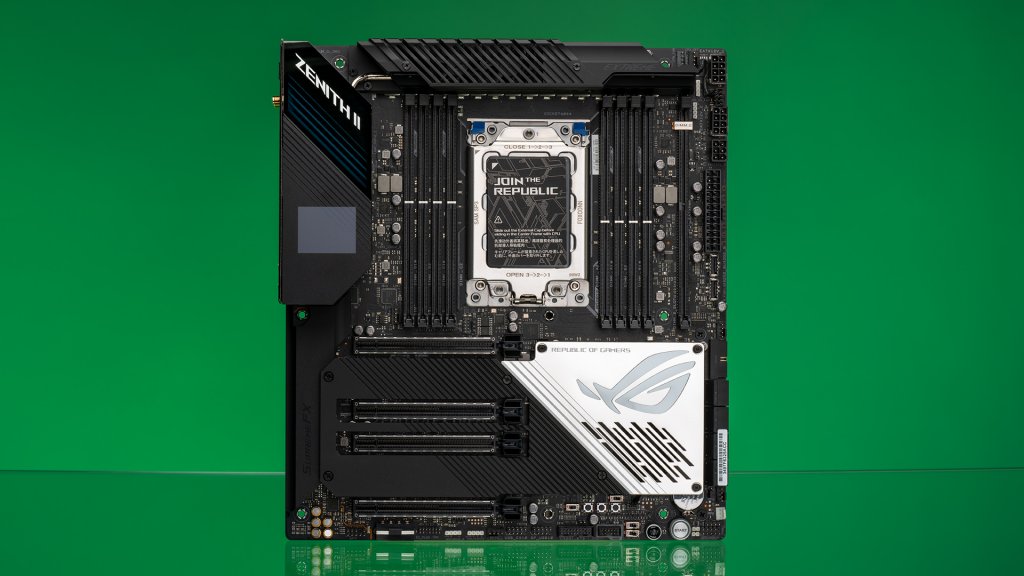
The Threadripper is undoubtedly a very powerful piece of machinery. A key characteristic of it, though, is that it’s a workhorse processor. It can do a lot of very impressive things. You can stream on Twitch and render a 4k video at the same time, dedicating a bunch of cores to one chore while you tackle the other. It can game with the best of them, it has more than enough processing power and speed to do so, but that’s not what it’s made for. Think about using a sledgehammer to put a thumbtack into a wall, and that’s what a Threadripper is to gaming.
Despite that, more and more manufacturers are using their gaming brands to represent the new Threadripper chips. We covered Gigabyte’s new TRX40 flagship motherboard, the Aorus Xtreme, which uses Gigabyte’s gaming brand, Aorus, too. Why? Because gaming brands have become synonymous with premium quality.
Games are more intense and demanding than ever, and they require high-end components just to run properly. The 3rd-gen Threadripper, likewise, requires the most these manufacturers can offer. In that vein, ASUS has included the Zenith II in its ROG brand, which has typically just been a brand for gamers. Don’t look at it just as a gaming motherboard, even if that’s what it is. Look at it as the best—at everything.
New sTRX4 socket, new firepower
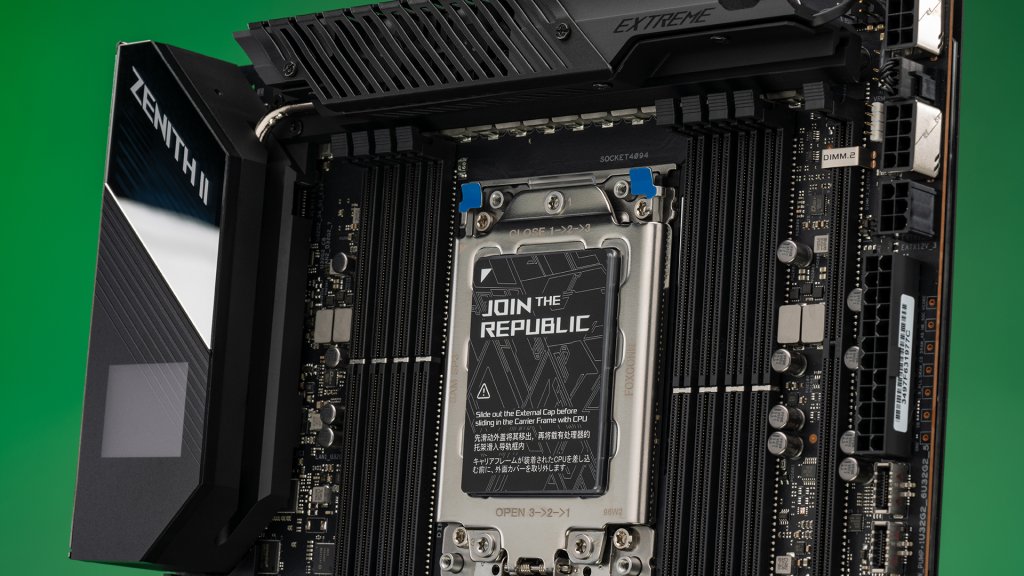
The socket is new, and while that does mean there’s a powerful new processor to drop in, there’s a whole host of new technology to back it up. And it’s all built into the motherboard.
The first thing to highlight is a technology that’s a staple of Threadripper boards—quad channel memory. The ASUS ROG Zenith II supports eight DIMMs at incredibly high speed, up to 4.6 billion cycles per second while overclocked. In other words, that’s really fast RAM. Each DIMM is unbuffered, too, which means there’s no bottleneck placed on the RAM by the motherboard. The RAM’s power is channeled directly into the CPU.
Secondly, since the launch of ASUS ROG’s X570 motherboards, the company has been pushing 4th-gen PCI onto its boards, and the Zenith II is no exception. 4th-generation PCIe slots aren’t quite needed yet, as most PCI hardware still adheres to the third generation. But ASUS wanted to future-proof its new motherboards, and that means having the option to jump to the next generation of tech when it’s ready. On this board alone, there’s four full 4th-gen PCIe slots, as well as two M.2 slots and room for expansion. All of these slots, as well as much of the board’s cooling system, are protected by what can best be described as a suit of armor for a motherboard.
Features built for overkill
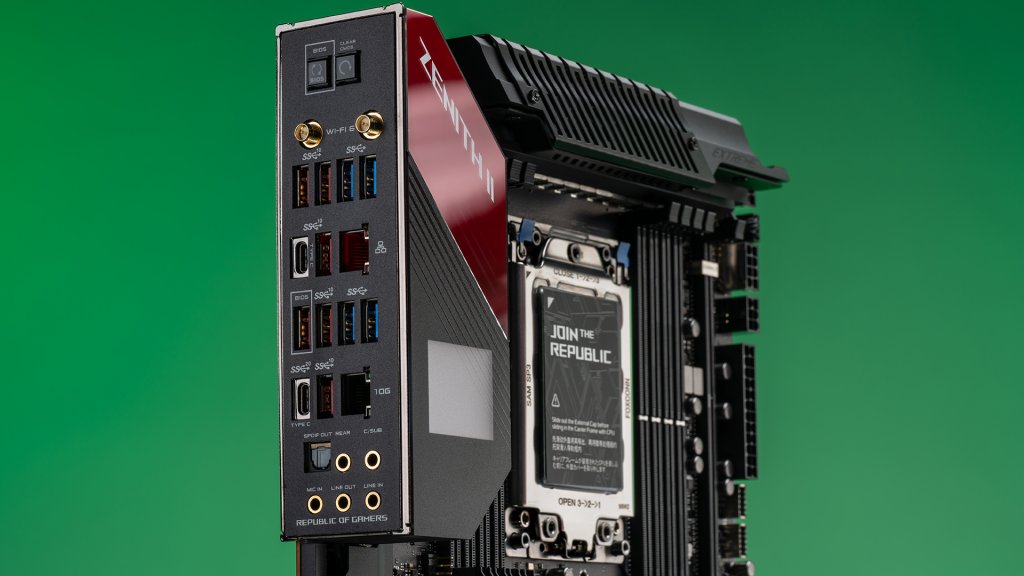
The rest of the motherboard can be summed up by one word: Overkill.
I’ll start with the board’s networking capabilities. In most motherboards, even some of the best boards you can buy in either the X570 or Z390 lines, if you want to take advantage of the fastest network speeds money can buy, which is usually 10GBPS, you need an expansion card or some other LAN adapter accessory. While it’s true that most people don’t need or can’t use 10GBPS speeds, usually restricted by their ISP, that may become the norm someday. And many major esports competitions and high-end gaming already take advantage of it. This motherboard’s standard LAN port is already 10GBPS capable.
It’s WiFi is in the same boat. The Zenith II’s WiFi is built standard with WiFi 6, which is the next generation of WiFi technology. Most devices don’t even use it yet, but when they do, they’ll be able to take advantage of faster and much more reliable WiFi connections. The USB and SATA connections on the board share a similar story, with eight SATA ports all with an incredible 6GBPS baseline speed and 12 USB ports. The industry-leading sound system, SupremeFX HD, is just as impressive, and is built on the S1220 Codec.
ASUS designed the Zenith II motherboard to last for a long time, and while you might not know fully what you can do with this much hardware right now, beyond very intense video rendering while streaming and gaming at the same time, it’ll be ready to handle whatever you can throw at it years down the road.

